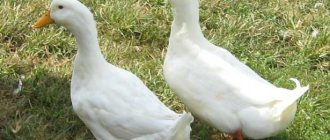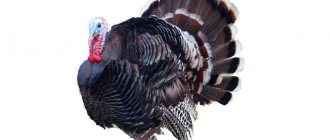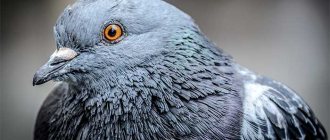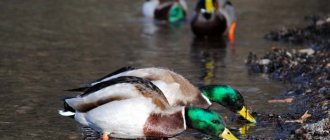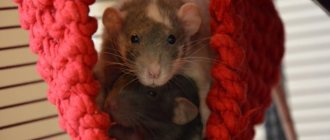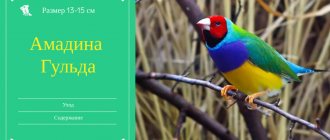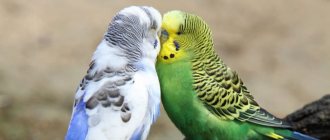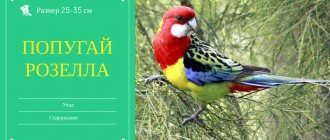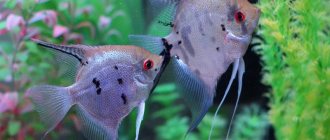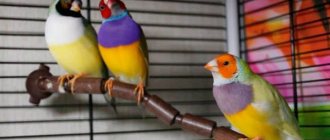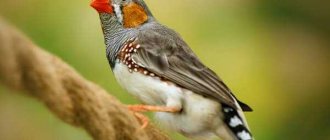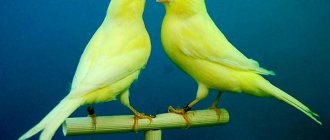Home / Eco life / Village life / Farming / Poultry farming / Ducks
Back
Published: 08/25/2017
Reading time: 5 min
0
2071
Poultry farming can be a profitable business due to its valuable meat. Wild ducks take root well in captivity without wanting to leave the yard. They reproduce well, producing viable offspring.
If you feed wild ducks in the same way as domestic ducks, the taste of their meat will change and will be no different from the meat of ordinary ducks.
- What breeds are there?
- Subtleties of content
- Feeding
- Water
How to care for wild ducklings at home?
In nature, mallard ducklings follow their mother out of the nest on the second day after hatching. They quickly become independent, obtaining their own food by catching fry and insects. In broods of mallards there are from eight to eleven ducklings.
Cardboard boxes or large wicker baskets lined with straw are suitable for keeping small chicks at home. The boxes should be placed in a warm place in the house for the first five days, and then the grown ducklings should be transferred to the duckling house.
Expert opinion
Zarechny Maxim Valerievich
Agronomist with 12 years of experience. Our best country expert.
Ask a Question
Motherless chicks need to be fed six times a day and given plenty of water. If the ducklings do not eat well on their own, they are fed from a pipette. From ten days of age, the number of feedings is reduced to three times.
Water
Keeping a wild duck at home requires the presence of a pond. You can release the bird into the water after the chicks are 3 weeks old. At first, they can swim up to three hours a day. Once the ducklings are 4 weeks old, they can swim as much as they want, even all day long.
Ideally, the reservoir will be natural - a pond, lake, shallow river. If this is not possible, it is necessary to provide the birds with an artificial pond. As a last resort, an old bathtub is buried in the ground and filled with water. The water needs to be changed periodically. Wild ducks are accustomed to swimming from early spring to autumn.
Subtleties of captivity
Safe ways to catch and tame ducks:
- snare - a thin cord with a loose loop at the end is placed in the grass. When the duck steps into the loop with its paw, the lace is tightened;
- trap - bait is placed on the ground, a box or net is placed on top and dropped on the bird.
A longer-term way to acquire a domestic flock of ducklings is to feed the brood during the summer, and then transfer it to the duckling house. Mallards get used to the people who feed them and flock to the food themselves.
Birds need to create conditions close to natural - ensure free movement and provide a place for swimming. The main requirements for arranging a duck house and keeping birds:
- the room is brick, insulated from the inside with sheets of chipboard;
- bedding - made of sawdust and straw;
- the aviary is spacious, the birds are accustomed to activity, in a cage they will become apathetic;
- fresh air - a ventilation system must be provided in the duck house;
- walking - an area for ducklings to walk should be allocated in an area overgrown with grass and fenced with a fine mesh;
- pond - place a bowl of water in the paddock for walking.
It is good to set up an artificial pond in the garden and put small fish there. In the wild, mallards spend the summer on the water, feeding and teaching ducklings to swim. In warmer months, birds will do well in an open pen with a pond.
See also
Names and symptoms of duck diseases, their treatment at homeRead
The depth of the pond should not exceed one and a half meters. Ducks dive for fish to a depth equal to the length of their body - approximately 60 centimeters. The banks of the reservoir should be made flat.
The immunity of wild ducks is stronger than that of domestic ducks. They need to be vaccinated in case of an unfavorable epizootic situation in the region. Little ducklings should not be allowed to walk on wet grass after rain or in dew so that they do not catch a cold.
Adult mallards are capable of raising someone else's orphan - a duckling of a domestic breed of bird. In nature, ducks take care of the offspring of their neighbors who died after being attacked by predators.
Rules for constructing a comfortable house for ducks
The room in which the poultry farmer plans to keep ducks should not be too large. In addition, it will be much easier to insulate a small poultry house in winter. A room with a front wall height of 1.8 m and a back wall height of 1 m is quite suitable for birds. If there is no ready-made house for ducks, then you can build one using these instructions.
You should decide on the size of the building and dig an appropriate foundation 30 cm deep.
At the bottom of the pit, sand and gravel are laid in a layer of 10 cm. The mixture is compacted.
For the foundation pit, formwork is made from boards and reinforcing mesh. The frame should be 30-40 cm above ground level. The resulting pit is filled with concrete and left to harden for 2-3 weeks. The hardened concrete is covered on top with sheets of roofing felt. To make the floor, logs are made of wood with plywood underneath. They are laid at a distance of 1 m from each other, with a layer of insulation between them. Boards (sheets of plywood, chipboard) are laid on top of the insulation, which will serve as the floor. They are nailed to the joists.
The walls are erected from stone, brick, aerated concrete, and wooden beams. The inside of the room is lined with clapboard or plywood. A layer of insulation is laid between the sheathing and the walls.
The roof can be made gable or single-pitch. It is lined with plywood from below and insulated
The top of the roof can be covered with slate, tiles or other roofing material. It is important that the poultry house has windows and doors. This is necessary for ventilation and temperature regulation.
It is necessary to install bars in the windows to protect against small predators. The door is made so that it opens outward.
If you follow all the established rules for raising ducks, you can get large, healthy ducks
Experienced farmers recommend that beginners turn their attention to duck breeding, because it is a profitable branch of poultry farming. You can read more about keeping ducks at home in our article
What to feed wild birds?
Adult ducks eat grains, vegetables, legumes and plants. In summer, birds are released to graze on the grass. Diet for ducklings:
- wheat, oatmeal, barley groats;
- peas;
- boiled potatoes;
- beet;
- carrot;
- sunflower cake;
- bran;
- feed yeast;
- fish fat.
To feed hatched ducklings, prepare a mixture of crushed eggs and low-fat cottage cheese in meat or fish broth. In nature, ducks eat algae.
You need to add duckweed to the diet, and also offer soaked kelp meal. Bloodworms will replace insects. Birds should be given fresh chopped fish every two days.
You can determine what to feed a wild duckling by its plumage. The newly hatched chick is covered in yellow down. In this case, complementary feeding begins with crushed boiled eggs, cottage cheese and crushed grains. Chicks with brown feathers are fed grains with the addition of chopped grass and boiled chopped potatoes.
Winter diet of ducks:
- corn;
- wheat;
- beans;
- oats;
- silage;
- vegetables.
To provide birds with green food in winter, wheat grains are sprouted. Ducks need plenty of water. There should always be containers with clean water in the duck house. To prevent ducklings from getting their paws wet in the troughs, it is advisable to install automatic drinkers and supply filtered water free of chlorine. But it’s easier to put containers with settled water and change it twice a day. It is not recommended to give raw tap water, but spring water will do.
Direction of breed breeding
Depending on the purpose for which musk duck breeds are raised, their living conditions do not change, but the period of keeping and feeding is completely different.
Egg production
On average, an adult Muscovy duck produces about a hundred eggs per year. If all the necessary conditions are created, this figure can increase to 120 pieces, and each egg will have a mass of 60 to 70 g. For this, the bird needs a warm atmosphere in winter, as well as regular maintenance of cleanliness in the poultry house.
They need good lighting and ventilation of the room. If we add to this a list of useful substances and vitamins, then pets will certainly become record holders for laying eggs.
Under favorable conditions, adults begin to lay eggs from the beginning of the year, otherwise the difference will be about two months. Young ducks begin to lay eggs after six months, gradually increasing the number of eggs every month. At first, the monthly clutch is about 8 eggs, and when the bird reaches 12 months of age, the number of eggs reaches 16 pieces.
Egg laying is a cyclical process. After intensive laying, which lasts about 5 months, a molting period begins for 2-3 months.
Raised for meat
Young offspring raised for meat, if properly fed, gain weight in the first six months. The weight of a drake is up to 4 kg, and that of ducks is up to 3.5 kg. If the house is cold and damp, they will gain weight less quickly.
Many people try not to keep the bird for long. Indo-ducks can gain 2.5 kg within 2-3 months, which allows them to be sent to slaughter
At the same time, it is important to maintain cleanliness, observe conditions, and adhere to feeding rules so that the birds do not get sick. Otherwise, they may not gain weight well, and their meat will not be as high quality and tasty.
What should you not give?
Prohibited food for wild ducks:
| Product | Harm |
| Fresh, moldy bread | Clogs the esophagus, causes stagnation in the gastrointestinal tract, the development of fungal disease of the respiratory tract |
| Whole raw vegetables | Not digested, gets stuck in the crop |
| Crackers | Swells in the stomach |
| Pumpkin, zucchini | Have a laxative effect |
| Herbs of the Ranunculaceae family | Contains paralyzing toxins |
To hatch wild ducklings, vegetables need to be boiled and finely chopped. For better digestion of food, you should place chalk and crushed eggshells in a separate bowl.
Fattening ducklings for meat
Ducklings are usually not susceptible to diseases that can harm other birds, so there is no need to use various veterinary drugs to accelerate growth and development. Do not give your ducklings chemicals: if the medicine is used incorrectly, it can cause harm to your pets. Allow individuals to plant food at the end of spring, let them walk outside and eat in nature. If the weather is bad and there is no opportunity for walking, cut off the vegetation and bring it to the house.
Plant food for fattening ducklings for meat
In winter, it is necessary to dilute the diet with nutritious feed. To feed one chick during the cold period, you will need potatoes (13 kg), root vegetables (10 kg), hay (8 kg), bedding (12 kg), medium-sized granular sand (600 g), as well as combined food (1 kg) or other mineral food. If you feed the offspring correctly and provide them with proper maintenance, the individual will reach the weight required for slaughter by nine weeks. For example: after consuming 10 kilograms of feed, a Peking duck weighs three kilograms, and Muscovy ducklings will have to be fattened a little longer.
How long do they grow?
Wild ducklings develop quickly and at two months of age look like adult ducks. In order for the chicks to gain weight better, they should be fed with vitamin herbs - dill, scalded nettle leaves, beet tops, Chinese cabbage. Raising ducklings for fattening lasts up to seventy days, as then molting begins. The carcasses will be difficult to pluck, and the meat will become tough.
See also
What herbs can and cannot be given to domestic ducklings, what they eat and likeRead
Additional recommendations
Quite often, wild ducks are bred for meat. In this matter, it is important not only to send them to slaughter on time, but also to know how to pluck them. There are many methods. However, you need to know some nuances.
You can pluck the bird using the hot method. However, there is a high probability of the meat changing color. Therefore, after this method, it is better to cook the bird immediately rather than store it. If you plan to keep the meat in the refrigerator for some time, you can pluck the duck using the dry method.
If you decide to use the hot method, do not rush to remove the feathers immediately. Otherwise, you may damage your skin and burn your hands. Allow the carcass to cool before plucking the bird.
Breeding Features
In nature, females build nests and lay eggs in the spring. The males leave them after the clutch appears and go to molt. Birds mate in a pond, so you need to put a bowl of water in the duck house or release the ducks to the pond.
In captivity, females lay eggs three times a year. Mallard ducks do not abandon their chicks, so you will not need an incubator. Ducks hatch eggs intermittently, during which they feed. Before leaving, they cover the masonry with their own down. Laying hens should be fed four times a day, with more oats and barley added to the diet.
The shells of mallard eggs are harder and smoother than those of farm birds. The weight of one egg is 60-80 grams. The duration of the incubation period is 26-28 days. Chicks hatched in cold weather must be kept warm in the first days. The brood is placed in a box lined with foam on the inside and placed on a bowl of hot water or next to a radiator. In summer, chicks do not need heating, but they should be protected from drafts.
Temperature adjustment, hardening
Noticing that the ducklings are cold, you need to lower the lamp lower, closer to the floor.
If you find that they are too hot, you need to raise the lamp. If there are not many ducklings in the brooder - 30-50 heads - then one such lamp is enough. It heats well and has a significant heating radius. With a large number of ducklings, to heat them it is necessary to use several lamps at the rate of 1 lamp for approximately 50 ducklings. After a week, the hardening process begins. To do this, you need to start lowering the temperature by 1 degree every day until it is brought to room temperature of 24-26 degrees. After two weeks, the ducklings can already do without additional heating. They are left with only additional electric lighting if there is not enough daylight. To accustom them to the natural change of time of day, the lighting is turned off at night.
Possible mistakes
The first miscalculation is the capture of a wild duck of an indomitable species. It is rare to see migrating waterfowl near villages and in city parks. If the bird is aggressive and does not eat or drink, it is better to release it into the wild. More often, fishermen come across friendly mallards, gadwalls and red-headed ducks. These three breeds quickly become accustomed to humans, gain weight and lay eggs several times a year. The birds are similar in gray plumage with a wavy black pattern. Mallard drakes are distinguished by their green heads. Unfavorable conditions for wild ducks:
- cellular content;
- lack of water and walking;
- large pieces in food;
- feeding only grass;
- absence of solid additives - chalk, eggshells, shells.
Cereals should be given crushed to birds of all ages. Boiled vegetables are given only in chopped form or mashed into porridge. Grass and cabbage leaves are cut for the chicks. The beak of adult ducks is adapted to tear pieces from leaves and tear off stems. The cleanliness of the duck house should be maintained regularly, as when keeping purebred domestic ducks: the bedding should be updated every two days, and in the summer, the premises should be disinfected while the birds are walking.
In the wild, mallards do not come into contact with droppings for long periods of time. In a dirty duck house, they will become infected with the same infections as poultry. If the temperature in the duck house in winter drops below five degrees Celsius, the room needs to be heated.
Ducks should not be allowed to roam unattended in an area that is not fenced in. Chicks at ten days of age try to fly, but may fly outside the area and not return. Birds tamed as adults should theoretically return to a place where food and shelter are always waiting for them. But it is still recommended that wild ducks trim their wing feathers before the appearance of the fourth generation.
Let's sum it up
Wild ducks today are increasingly found on domestic farms. The thing is that, despite the lower characteristics of the final product produced by the duck compared to long-domesticated species of this bird, its unpretentiousness leads to much lower rearing costs, while providing decent quantitative and qualitative characteristics:
- duck meat;
- feather and down;
- fat;
- eggs.
Keeping wild ducks is a profitable business for modern farmers
By taming wild ducks, you can also reduce the initial cost of purchasing ducks for breeding. As a result, you will only need to provide the bird with decent living conditions. If you successfully cope with breeding mallards, then you can then move on to more demanding and whimsical fruits of breeding work.
Independent breeding of such birds requires preliminary preparation of a room for keeping them. However, even beginners in the field of poultry farming without any experience can cope with this process.
Helpful information
Each new type of food is introduced into the diet gradually, starting with tiny portions. They look at the condition of the ducklings. If there are no signs of stomach upset or other manifestations of illness, then only then the amount of new food is increased.
When choosing pasture for ducklings, pay attention to the composition of the vegetation on the field. Avoid clearings where poisonous herbs grow: buttercup, datura, hemlock, spurge.
When grazing ducks near a pond, you should remember that the livestock will almost certainly become infected with worms by eating parasite eggs along with the grass. 15 days before slaughter, the livestock are given medication against internal parasites.
When caring for small ducklings, great attention is paid to the cleanliness of the feeders.
The troughs need to be washed daily, especially if the young animals are fed wet mash. Feeding baby ducklings is an important part of raising poultry. The health and development of ducks depends on the correct composition of the diet. You need to follow the recommendations of veterinarians and experienced farmers, then the bird will quickly gain weight and will not cause any trouble.
Nutrition
The nutrition of wild ducks comes directly from the species to which they belong. Many birds get their food directly in the water. The “menu” of wild ducks includes both plant and animal food. However, the ratio of ingredients is usually different. It is the type of food that often determines certain behavioral characteristics of a given wild bird. Mallards in nature love to eat algae, as well as insect larvae that live in the upper water layers. As for species such as ducks, long-tailed ducks or eiders, they eat small fish, caviar, and shellfish that live deep under water.
Birds that mostly feed on plant foods have characteristic, well-developed horny plates on their beaks. Usually they take water into their mouths with all the remains of algae, insects and larvae, and then they simply filter everything thoroughly using plates. If the main diet of these birds is fish, then it remains in the mouth and is then swallowed. The tip of the duck's beak is widened to make it easier to pinch plants.
